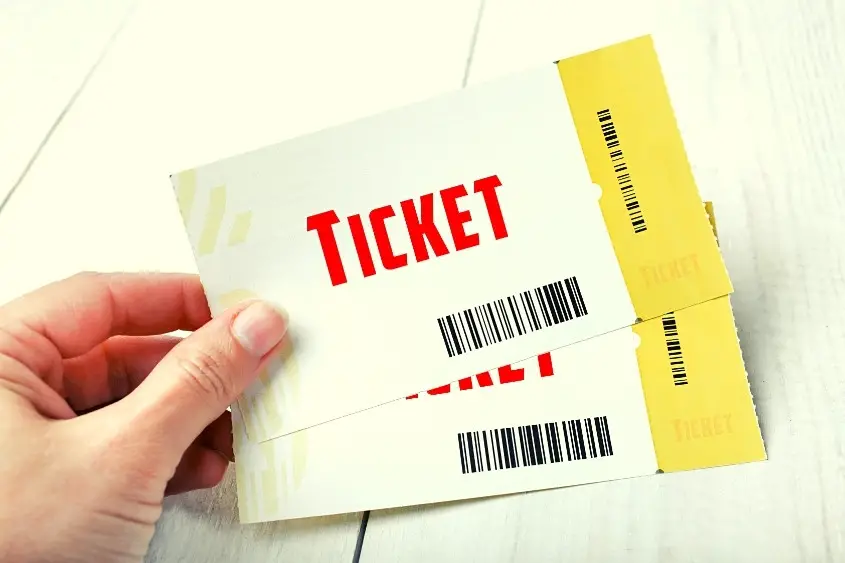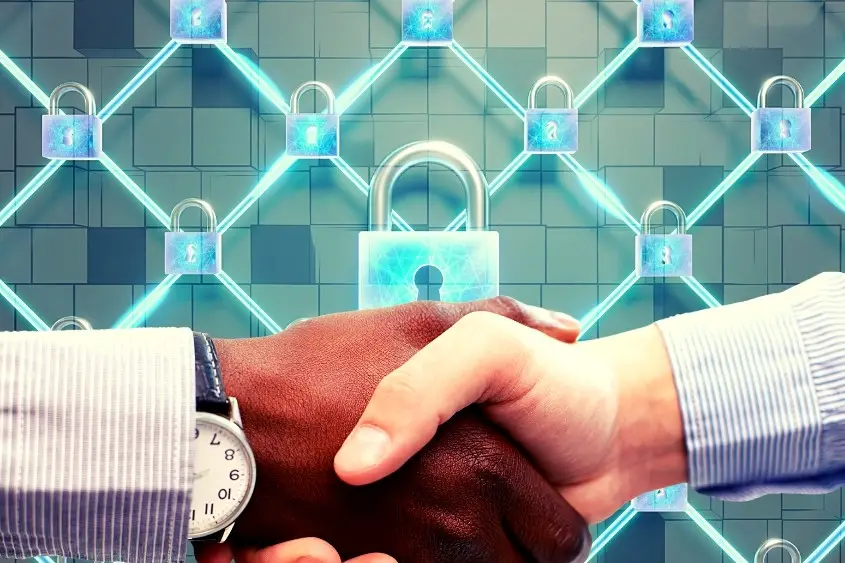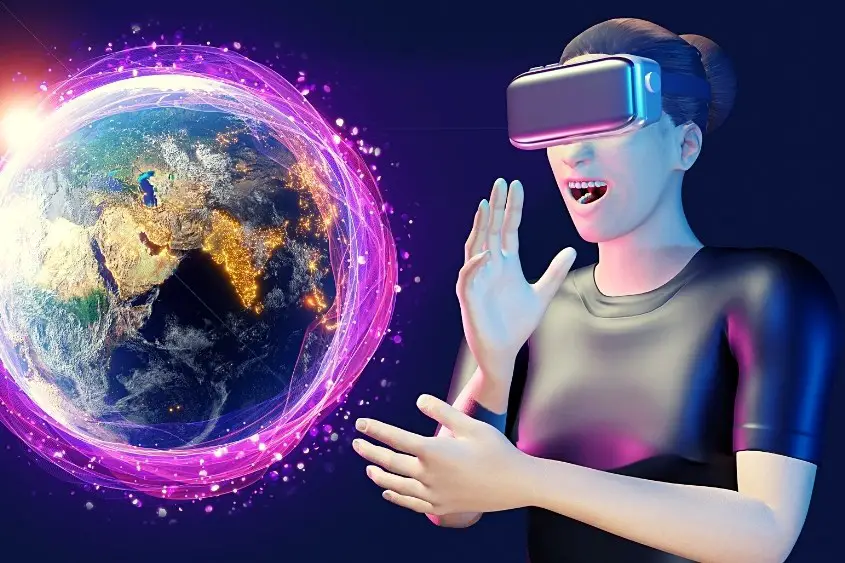The seemingly sudden boom in NFT technology has left many to believe that NFTs are worthless. However, these ten use-cases are sure to change your mind.
Ten reasons why NFTs aren’t worthless are because they are used for collectibility, contracts, ticketing, investments, raising capital, providing trust and transparency, proving authenticity, increasing scalability, securing votes, and proving virtual ownership.
Below is a list of ten reasons why NFTs are not worthless.
Collectibility
Collectibility is an obvious use case for NFTs. When NFTs were initially introduced to society, they were largely introduced as art collectibles. With that, many would argue that the NFTs being produced weren’t even art, they were simply junk.

Now, bear with me. I agree that 98% of the NFTs on the current market are bad investments, and many of them are complete junk, but that’s not to say that is true for every NFT or the technology in itself. So, how do NFTs improve the collectibility aspect of products?
NFTs provide a new element in the collectibles industry, that is proof of ownership. Because NFTs are tracked from the time of their creation and beyond, you can always verify if a collectible is real or not. But, what about digital vs physical collectibles? Well, they go hand-in-hand in my opinion.
- Digital collectibles
Before NFTs, there was technically no such thing as a digital collectible. The closest thing was video game skins and verified checkmarks on social media, but even then, there was no way to prove ownership. Now with NFTs in combination with blockchain technology, we can prove ownership of digital items.
- Physical collectibles
Okay cool, we can prove ownership of digital items, but, how do NFTs affect the collectibility aspect of physical items? It’s actually quite simple. Similar to how collectors receive a certificate of authenticity when buying a collectible piece of art, the NFT acts as the certificate of authenticity instead. Why is this better? Because NFTs are unique and can’t be changed thanks to the security of the blockchain. Whereas a physical piece of paper could be replicated.
Contracts
Here is where we get into some real use-cases when it comes to NFT technology. NFTs have in some cases and will continue to act as legal contracts. Whether it be a service contract with a company, a car lease, or a home loan, NFTs are helping to create a more efficient way to implement and execute contracts.

One perfect example comes from the Bacon Protocol — a decentralized mortgage lending protocol created using smart contract technology on the Ethereum blockchain.
This technology allows anyone with a Web3 wallet to lend money and earn interest while seeing exactly which homes they’re lending against. As well, anyone with a home that meets the protocol’s criteria can create an NFT and use it as collateral to borrow money.
Not only does this type of contract execute automatically, but it also cuts out the need for a middleman. That means the lenders receive a larger portion of the interest earned, whereas the banks would generally reap all the profits from interest fees.
Also, let’s not forget to mention the amount of paper that could be saved if we moved these types of contracts to a completely digitized method.
Tickets
NFTs being used as tickets to various events just makes sense. Not only do physical paper stubs seem outdated, but the possibility that someone can get away with selling fake NFT tickets is technically impossible, compared to physical ticket stubs that can be easily replicated.

But wait, we have mobile tickets, right? Why would we want to compliant things by turning convenient mobile tickets into NFTs? It ties back into the collectibility aspect.
Many people actually enjoy collecting tickets from their favorite events, and at some point down the line, they might want to sell their collectible ticket to another fan. But, you can’t do this with mobile ticketing, and even if you could, how would you prove to someone if it were legit or not? You couldn’t.
Hence, NFT technology is the only real solution. Furthermore, NFT tickets aren’t just tickets, they can also be collectibles and even art. My favorite example of NFT ticket art appears on the 2022 VeeCon NFT tickets.
VeeCon is a multi-day superconference where only VeeCon NFT ticket holders get to experience an extraordinary lineup of content including iconic keynote speeches; innovative and educational talks, panels, and many collaborative experiences.
The coolest thing about these tickets is that they are digital pieces of art, in addition to being a ticket to the event. The artwork was created by Erick, aka Snowfro; an NFT artist and the founder of Artblocks.io. This means these tickets will go down in history as collectible pieces of art that can be bought and sold for years to come, even after the event.
Investments
Another popular use for NFTs comes in the form of investments. Similar to stocks, NFTs can be distributed to those who are interested in investing in a portion of a particular company or brand.

Furthermore, NFTs have the option to be updated if the creator desires this function at the time of its creation, meaning that companies can continue to provide additional value to holders through their NFTs. This is something completely new in terms of investments.
To invest in stocks simply means that you are buying shares of ownership in a public company, which you hope performs well over time to increase the value of your shares so that you can eventually sell them for a profit. That is where stocks end.
The general idea behind NFT investments is the same (you want the company to perform well), but NFTs can provide even more value to holders if the creator of the NFT wishes to do so. What does this mean?
For example, let’s say you hold an NFT from a large company like Nike. Of course, if they are successful in continuing to grow their brand, the value of your NFT will go up, but that’s not all. Perhaps Nike decides that all of their NFT holders also receive a limited-edition pair of shoes or exclusive access to a Nike-held event on a remote tropical island.
This might seem unlikely, and that’s because it was, until NFTs came about. Ultimately, the creator is in control of the value they provide to investors. The point is that the value can extend beyond the NFT itself, unlike stocks.
Raise capital
NFTs enable startups and established companies to raise capital from numerous investors from within their community, as opposed to traditional methods.

Traditionally, capital raise is when a company approaches existing and potential investors to ask for additional money in the form of either equity or debt. However, with NFTs, companies can seek capital through their own community.
To do this isn’t easy per se, because the company has to market itself and attract potential investors by drawing them into its brand. Once these companies have fostered a large enough community, then they can then sell NFTs to raise however much capital is needed to meet their goals.
This is a different approach to traditional means of raising capital because it allows people who don’t have large pockets to invest in the company, and allows for the company to raise the capital they need without seeking people with a lot of money.
Of course, as a consumer, this is an extremely risky investment, especially if you are supporting a startup company. But, if the company ends up doing well, both the business and consumer can win big.
Trust and transparency
There is no doubt that NFTs increase the trust and transparency of every transaction. Whether it be something as simple as a collectible piece of art or a home loan, the blockchain allows you to see every transaction that has occurred in relation to the NFT.

This means you have the ability to see when something was created, how much it has been traded for in the past, and all the terms and conditions that apply with the purchase of the NFT.
The blockchain provides a completely trustworthy way to verify transactions, as everything that happens on the blockchain, remains on the blockchain. With that, anyone has the ability to see what is happening on the blockchain, even if you don’t own the asset, making NFTs truly transparent in terms of who can see what. When it comes to NFTs and blockchain technology, there is no hiding what has already been done, it is recorded until the end of time.
Authenticity
Authenticity comes in many forms. From collectible assets to loans and legal contracts, verifying the authenticity of things will always matter.

Since NFTs reveal who the creator is and when something was created, among other things, they will continue to play a huge role in the verification of authenticity. Both from a consumer standpoint and even throughout the manufacturing process of products.
In today’s world, there are many fake food and supplement products. NFTs can help solve this issue by transparently tracking food products throughout their entire journey. From the time of harvest to the manufacturing plantation, all the way to the time of shipment to be sold in stores to consumers.
Companies that falsely claim their products were made and sourced in a specific country will eventually be exposed since the track record is transparent thanks to NFTs and blockchain technology.
Scalability
When it comes to growing a brand, scalability is crucial. Nowadays, companies take advantage of various social media platforms, local events, and collaborations. NFTs simply offer another platform to scale brands and businesses alike.

For those of you who might not be old enough to remember what business life was like before social media, it was a lot different. Many companies would advertise their brands using newspapers, magazines, billboards, emails, and television. With that, the owners of these media outlets would always have a say in the final marketing push before making it public.
Then, the introduction of social media allowed businesses to scale their reach even further thanks to the mass amount of users on these platforms. There are a couple of ways you can advertise your brand using social media: create an organic continent and foster a dedicated community over time, as well as pay to have your ads placed.
Again, these social media platforms ultimately have a say in what kind of content you can produce, as well as how much you have to pay to run ads. Now with NFTs, the creator is truly in control. You can create whatever you want, no one can censor what you create, and the potential to reach others is exponential.
That’s not to say that social media and all the other platforms don’t still play a role in scaling a brand or business, my point is that NFTs are an additional platform for scaling. As you can see, the way businesses have scaled in the past is a lot different compared to now. And that will continue to be the case as long as new technology is being introduced to society.
Voting

Voters in many nations are obliged to bring a picture ID and proof of residence with them when they go to their designated polling station to vote. However, many people are being looked over because they do not have copies of their IDs or any other kind of evidence that proves where they reside or if they are even registered to vote.
Consider voting in conjunction with NFTs. NFTs can help alleviate this problem since they give a digital identification for persons who lack physical paperwork proving who they are and where they live in the country. This will also assist in reducing cheating and voting fraud because NFTs will serve as an official record of individuals who voted and their ballots.
Virtual ownership
With the development of the metaverse in full swing, the virtual economy is in need of a way to prove ownership of virtual products within the metaverse. This use-case can be a difficult concept to understand, so if you aren’t familiar with what the metaverse is and its potential, make sure to check out our beginners guide.

I said this earlier and I’ll gladly say it again, before NFTs, there was no way to verify ownership of digital assets. Now, considering the metaverse is a completely immersive and virtual economy, we need a way to prove ownership, as well as verify transactions within the space. How do we do that? You guessed it; with NFTs.
Within the metaverse, you can find virtual goods, services, events, and properties. The only way to track and verify all of these different things is by utilizing NFT and blockchain technology. By implementing NFTs into a completely virtual world, we are able to structure a completely virtual economy, in parallel to the physical world.
Final thoughts
Although it might be hard to see how NFTs will be utilized in the future, and how they will ultimately help us, I hope this article has opened your eyes to what NFTs offer outside of just an image on a screen.
NFTs provide real-world use-cases and are being adopted by all industries, similar to how every industry now utilizes social media. If you aren’t a firm believer in the numerous capabilities which NFTs offer the world, all I can tell you is to stay curious and keep researching. You are sure to find more information regarding how NFTs are being utilized to accomplish great things.

7 thoughts on “Are NFTs Worthless? 10 Reasons That Prove They Aren’t”
Comments are closed.